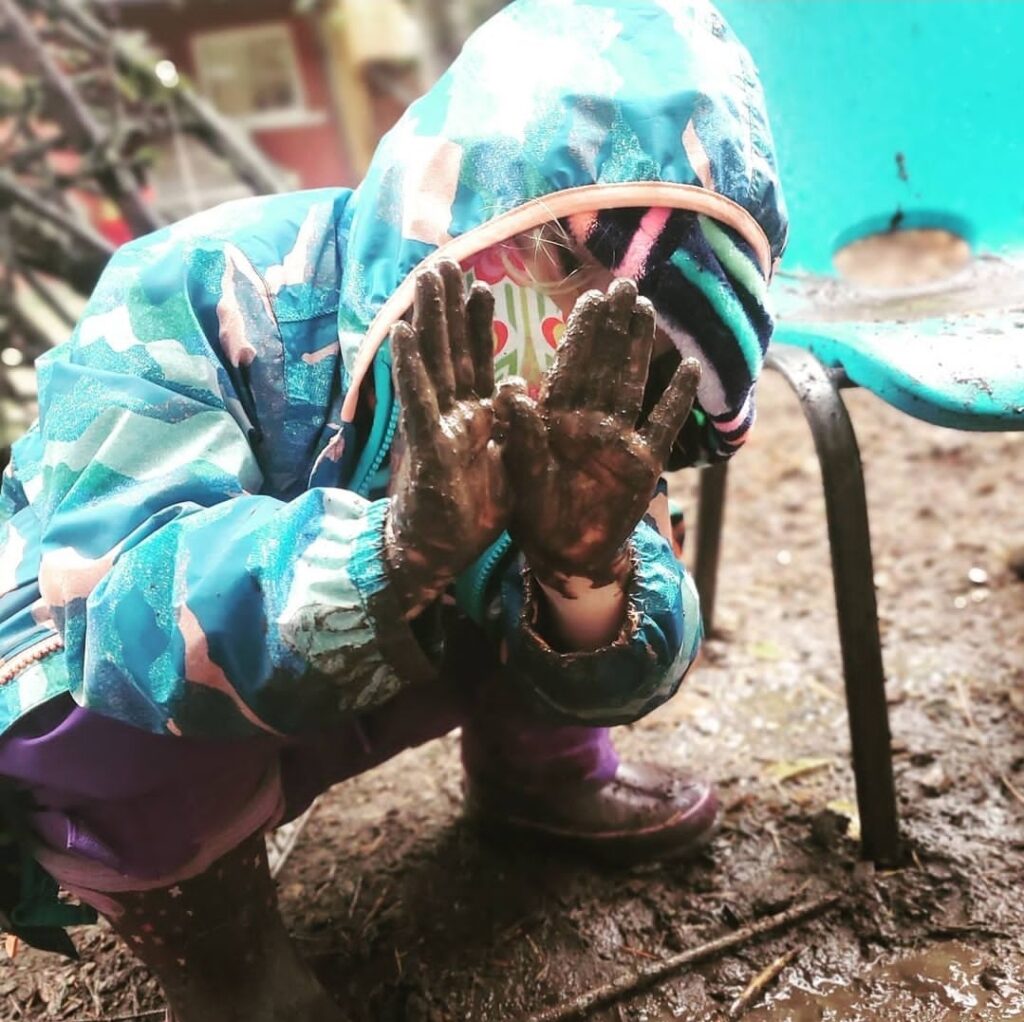By Ginger Jean Rushford
I am the founder and principal teacher at the Vashon Art and Nature School (VAANS), where self-directed play, nature immersion, and place-based learning are all foundational methodologies. These interrelated and interdependent methodologies were developed from the work of academics, teachers, predecessors, practitioners, and my own experiences.
One such experience was working with founder Erin Kenny at Cedarsong Nature School on Vashon. Cedarsong earned an international reputation for its nature immersion model. Erin defined nature immersion as “Unstructured free play in nature, resulting in an intimate, deep, and personal connection with the natural world.”
The desire to play is inherent in children. Self-directed play means that a child experiences independence in a safe, secure environment. The environment can be created by adults, but should be organized by the children themselves. This process nurtures creativity and advances imagination. Children control play with no adult intervention, unless reminders of agreements of safety or kindness are needed.
The privilege of being raised on Vashon greatly influenced VAANS’ philosophy. I grew up spending hours enjoying self-directed play on acres of land, with days filled with building forts, bushwhacking trails, and frolicking through fields. Later, in forming my teaching philosophy, I learned that the freedom of unstructured play was backed by science. My childhood, combined with formal education (a bachelor’s degree in early childhood education and sustainability), created the foundation of my preschool methodology.
VAANS embraces the beauty of nature immersion because it can be paired with any indoor, student-led learning to fit each child’s individual needs. In a world experiencing tangible impacts of climate change, introducing and supporting children in finding their connection to nature, and fostering their care for the natural world, is more important than ever.
The principal of place-based learning is an important piece of this introduction – creating an environment where learners are focused on local themes, content, and systems. This leads to a curriculum where the content becomes relevant and personal to the learner. For example, a three-year-old may point out a robin and observe that it is a bird we often see at school. This observation and the conscious memory of it is the result of being in an environment of place-based learning. Children more easily absorb information when they experience a subject in real time.
When children learn in a place they are familiar with, it translates to them wanting to learn and reach out into their community, state, and world. Experiencing these observations in youth can contribute to fostering global environmental awareness and care as an adult.
Learning outside of a highly structured setting also fosters collaboration and exploration. Placing children under the age of six into academic rigors that are too advanced for them can be detrimental, shutting them down before their developing mind has had a chance to explore. Public schools now teach kindergartners what was once a first-grade curriculum, pressuring parents to have their child reading, writing, and understanding math by age six, which often is not academically age-appropriate.
Children who are allowed to explore their worlds in natural time may be more curious and open to learning when introduced to academia at the appropriate kinder age. Part of VAANS’s orientation holds that unstructured time, largely spent outdoors, is crucial to a child’s development. Many children today receive neurodivergent diagnoses, which are very real in many cases, and may also be no more than normal preschool-aged behavior in others. These behaviors include bouncing from one thing to another, and pausing and taking longer with things that interest them.
Being allowed to learn about the natural world around them should be a fundamental right for young learners. Children today need fewer scheduled to-do’s, and a more appropriate curriculum for Pre-K-aged learning. This curriculum naturally becomes available when playing outdoors. From birth to age 5-6 years, the most important experience a child can be offered is the chance to create authentic play. Child-directed and interest-led play creates sensory-leading questions, empathy, compassion, and positive life-long qualities.
Children today deserve the opportunity to learn the calming effects of nature and the therapy it provides. These uninterrupted moments of child-directed play are where children and adults alike naturally create a relationship with self and the natural world.

